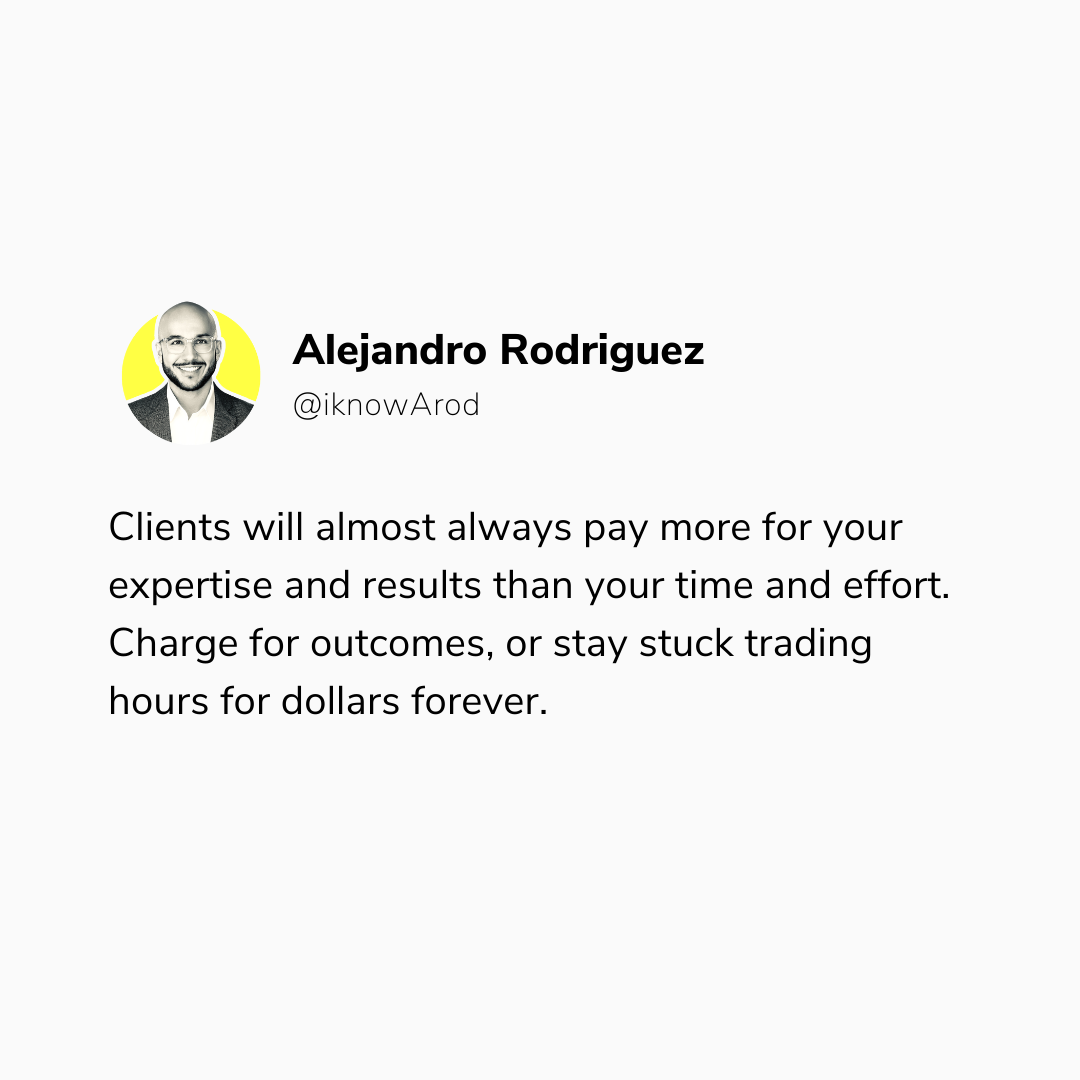Many freelancers struggle with pricing. Charge too low, and you work long hours for little reward. Charge too high without positioning your value, and potential clients hesitate to commit. The key is to price strategically, based on value, not just time.
If you want to attract high-paying clients and stop competing on price, you need a pricing model that reflects the transformation you deliver, not just the effort you put in.
Why Most Freelancers Get Pricing Wrong
Freelancers often set their rates based on:
- What others charge—leading to underpricing.
- Hourly estimates—turning their expertise into a commodity.
- Fear of losing clients—causing them to settle for less.
The problem? These approaches ignore the most important factor, the value you create for your clients.
The Shift: Pricing Based on Value, Not Time
Clients are not paying for your time; they are paying for results. Your pricing should reflect the impact your work has on their business, not how long it takes you to complete a project.
Example: A website that generates an additional $100,000 in revenue for a client should not be priced at the same rate as a basic website that does nothing for their bottom line.
How to Set the Right Price for Your Services
1. Define the Outcome You Deliver
Stop thinking in terms of tasks and start thinking in terms of results. Ask yourself:
- What problem does my service solve?
- What financial or operational impact does it have on my client’s business?
- How does it make their life easier or more profitable?
Clients will gladly pay more if they see a clear return on investment.
2. Create Tiered Pricing Packages
Instead of offering one generic price, structure your services into tiers based on value:
- Basic Package: Covers the essentials and is priced for budget-conscious clients.
- Standard Package: Offers more value and better results.
- Premium Package: Delivers the highest level of service, with the greatest impact.
This approach gives clients options, making it easier for them to commit while positioning your premium offer as the best choice.
3. Anchor Your Pricing
Use price anchoring to set expectations. If your highest package is $10,000, a $5,000 offer suddenly feels more reasonable. Clients need context to understand your pricing, so position your services strategically.
4. Stop Charging Hourly Rates
Hourly pricing limits your earning potential and encourages clients to see you as an expense rather than an investment. Instead, price based on:
- The complexity of the problem you solve.
- The expertise required.
- The measurable impact of your work.
Example: Instead of charging $50 per hour for SEO services, charge $3,000 for an SEO strategy that drives targeted leads and increases revenue.
5. Test and Adjust Your Pricing
Pricing is not set in stone. If clients say yes too quickly, you are probably too cheap. If you get constant pushback, you may need to adjust your positioning.
- Experiment with raising your prices.
- Observe client reactions and conversion rates.
- Improve your sales process to communicate value effectively.
Freelancers who price based on value, not effort, consistently earn more while working with better clients. By shifting away from hourly rates, structuring tiered offers, and positioning yourself as an investment, you take control of your pricing, and your business growth.Ready to Grow Your Web Consulting Business? If you are looking to take the next step in growing your web consulting business, learn how at: http://join.webconsulting.com/

